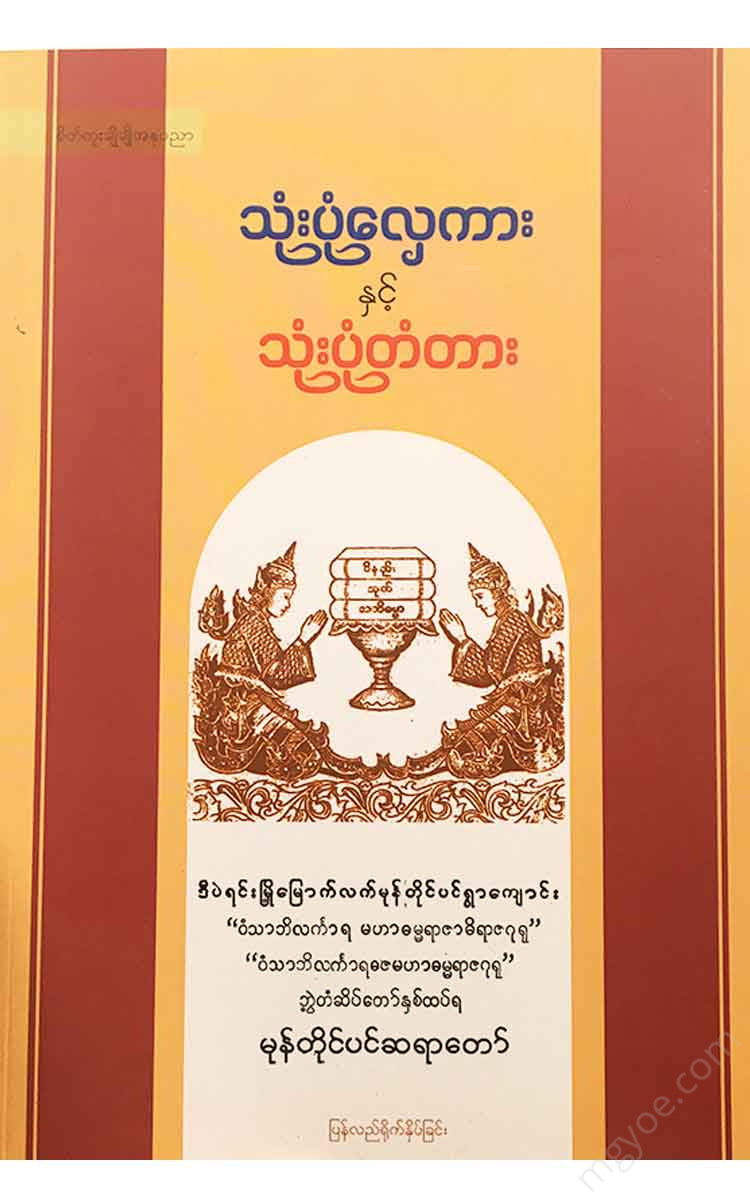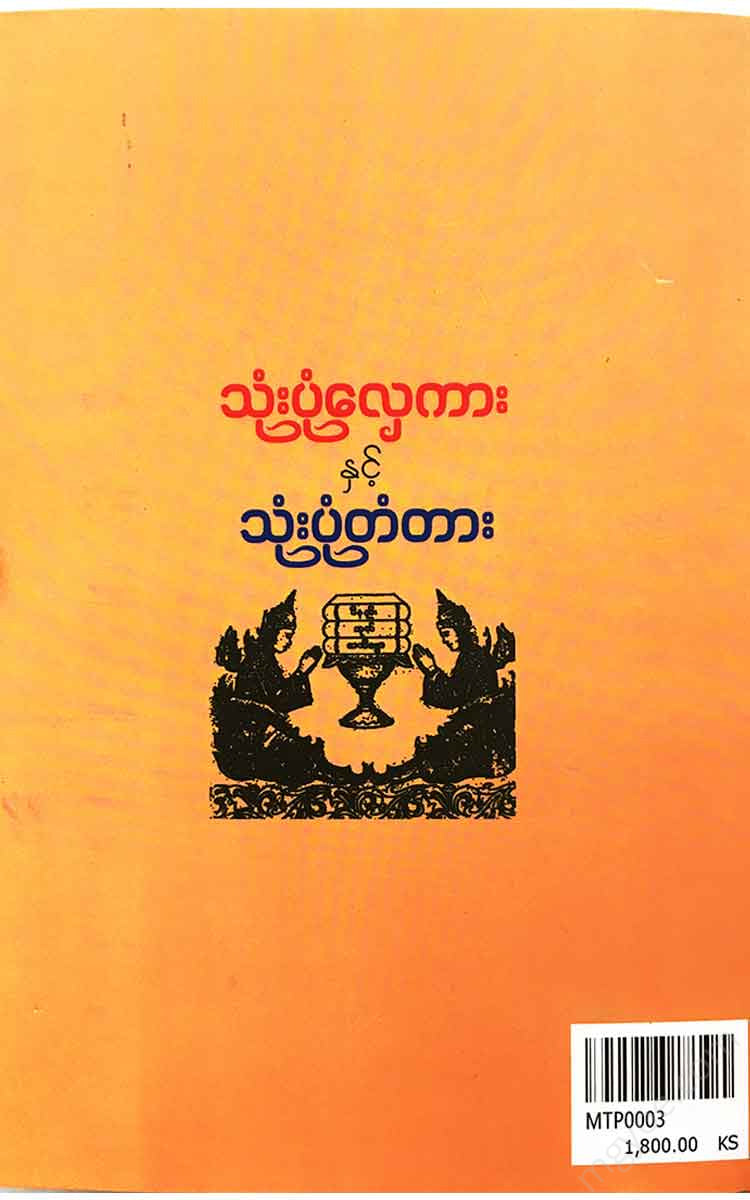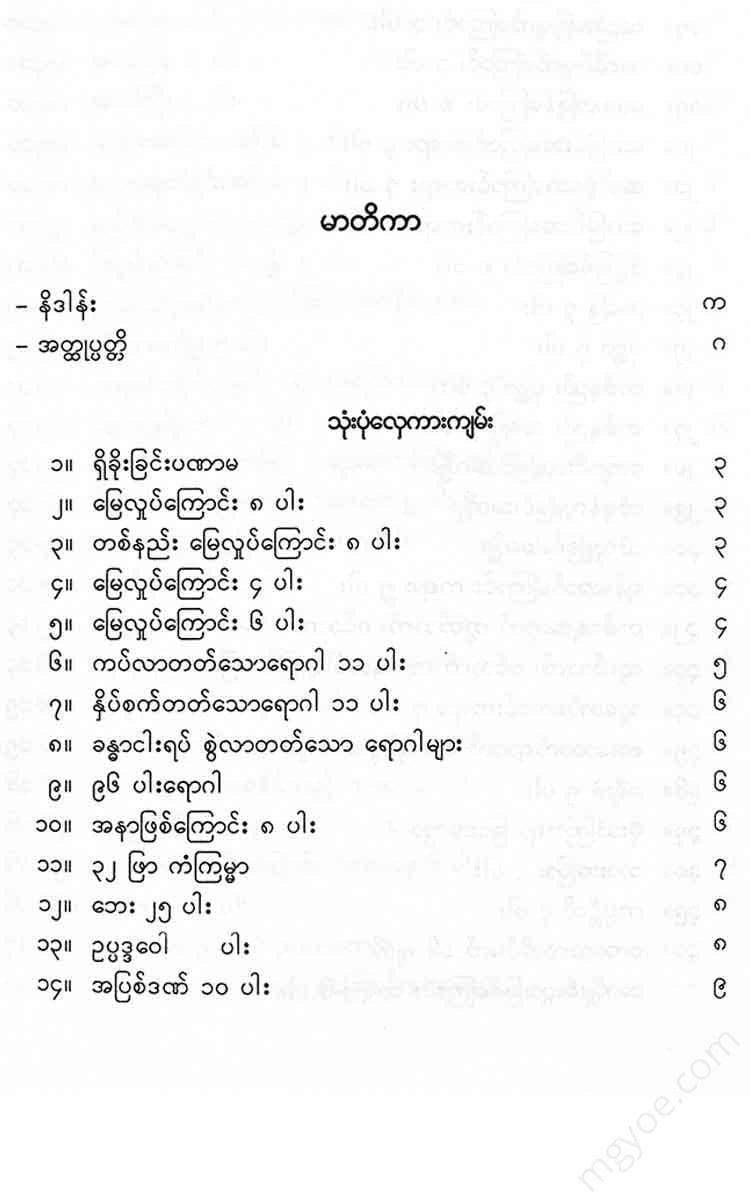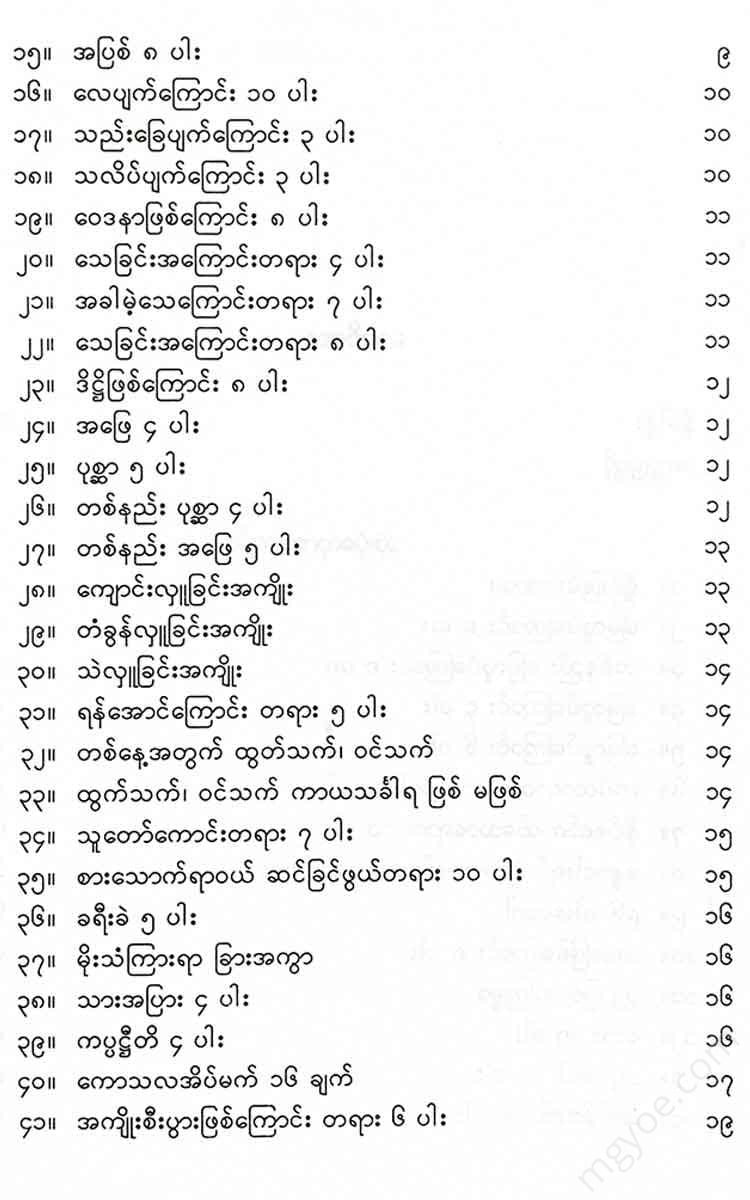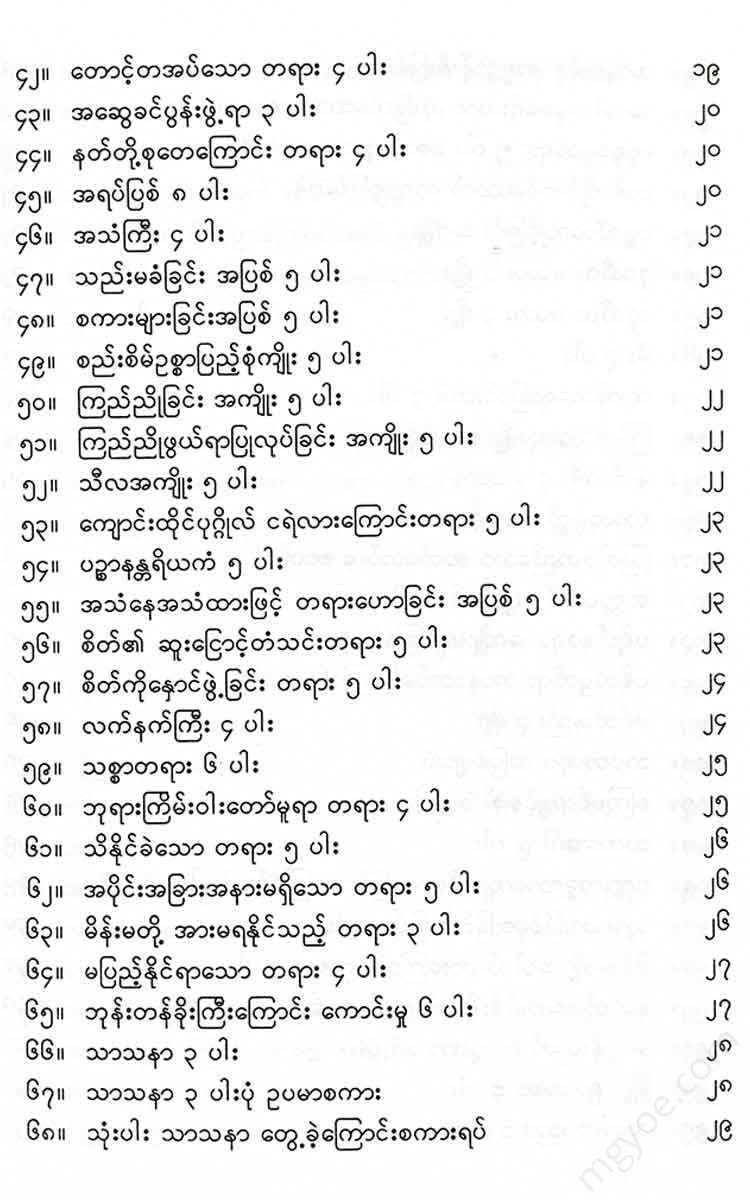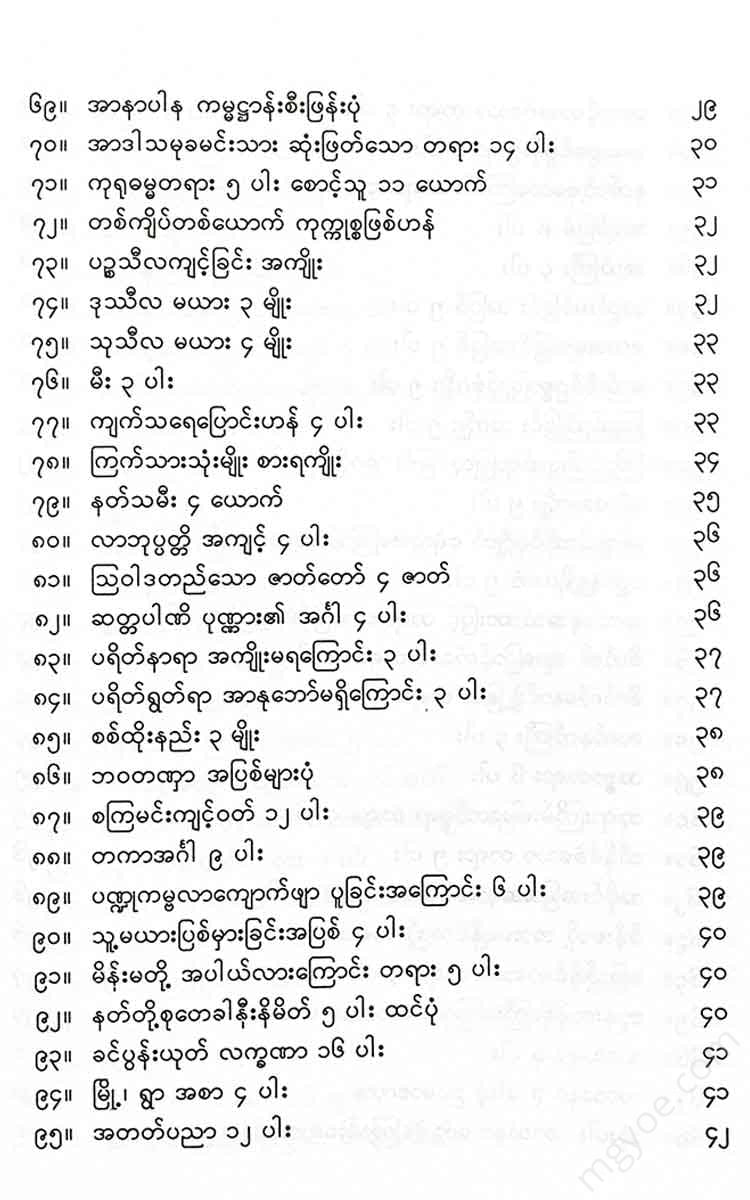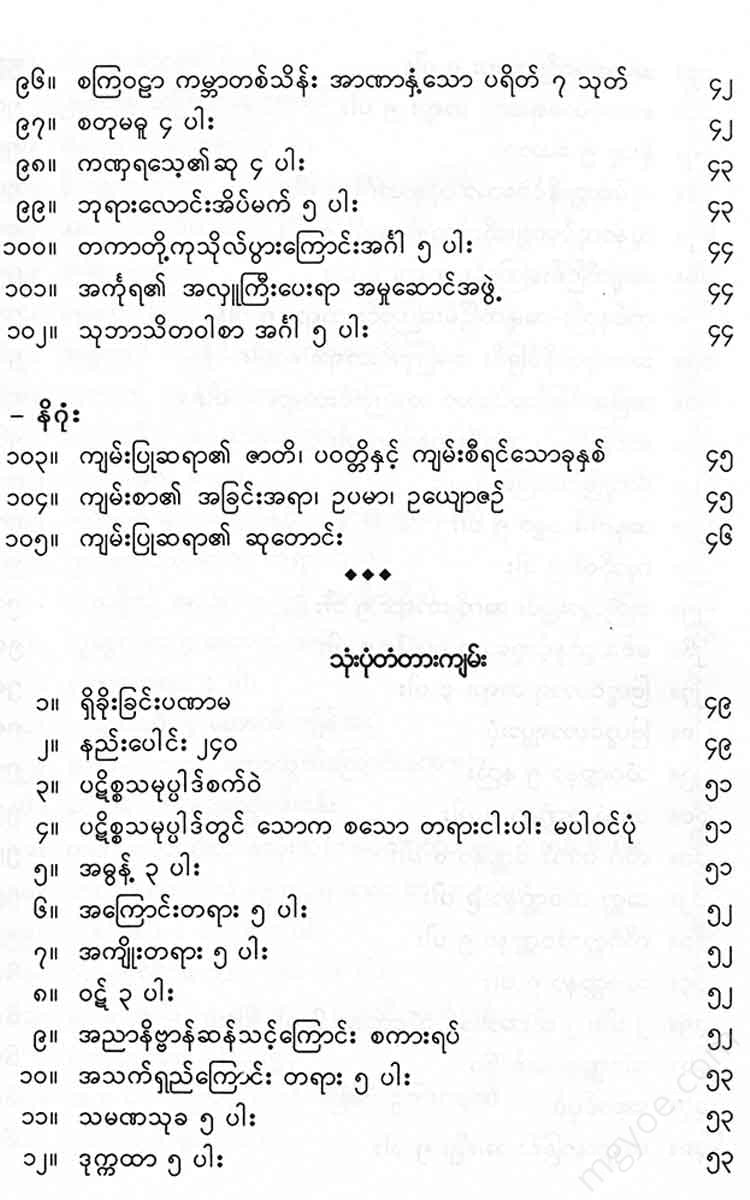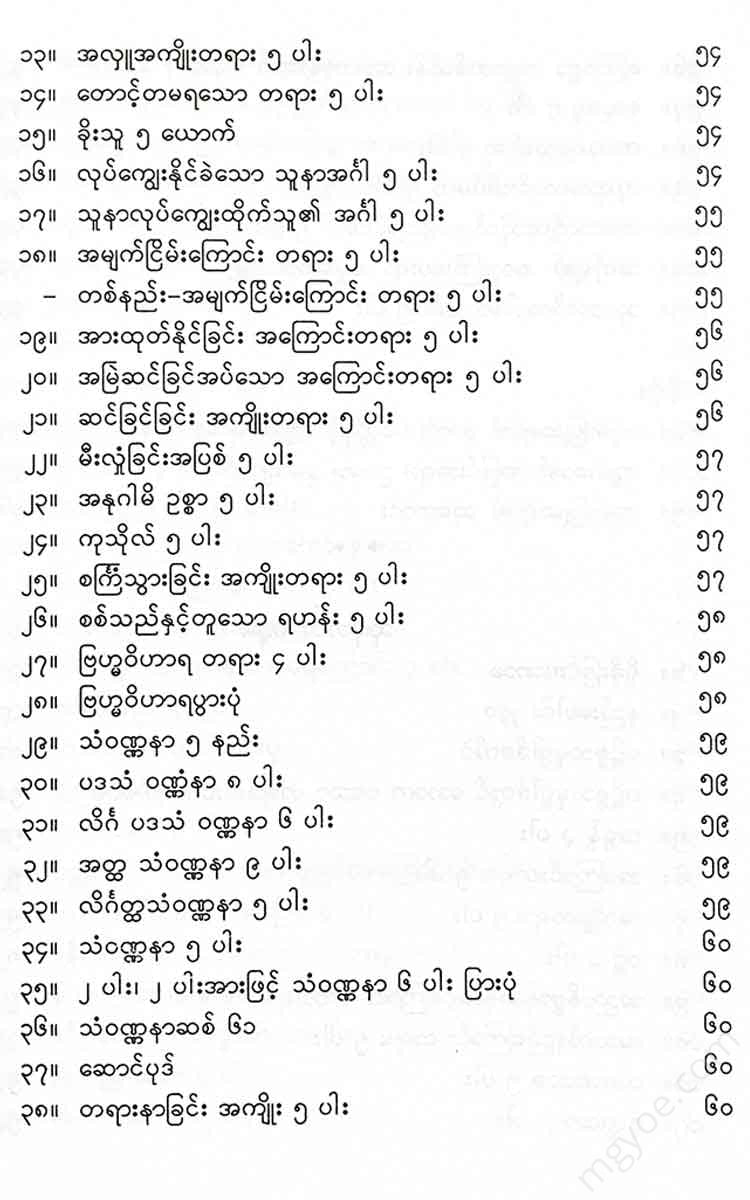စိတ်ကူးချိုချိုစာပေ
Mon monk - Three-step staircase and three-step bridge
Mon monk - Three-step staircase and three-step bridge
Couldn't load pickup availability
Namo Tassa Bhagavad Gita Arahant Gita Sammasambuddha.
Worship is a beginning.
1. I pay homage to the Three Jewels, the Great Teacher, with full faith, delight, and joy. He has written many books, profound words, and is worthy of action. He will always carry them in his mouth.
8 earthquakes
2. Conceiving, the time of the sun, rebirth, attaining golden wisdom, beginning the Dhamma,
The time of the trance, the release of the life, the attainment of Nibbana, the theft of the qualities of meditation, a kind of shock, because of these eight, the great beauty, the trembling, the fixed and unchanging heart.
This is the eighth statement about earthquakes.)
In other words: 8 earthquakes
3. During the time of the forest retreat, the Buddha attained enlightenment, the support, the one who took the reins
This is another way to remember the eight earthquake-related phrases.
4 earthquakes.
4. A sign of blessing, a sign of effort, a sign of wonder, a sign of timelessness, because of these four, the eight dwelling places tremble, a sign of the earth shaking.
This is a memorable four-part story about earthquakes.
For Ka, take the Kalakarama Sutta, for Gau, the Gautamaka Sutta, for Va, the Vaisantara Jataka, and for V, the Brahmajala Sutta.
When he leaves the forest, he moves because of his vigour. When he receives help, he moves because of his miraculous strength. When he preaches the story of the Vaisantara, he moves without time. When he preaches the Kalakarama Sutta and the Gotama Sutta, he moves because he bears witness. When he preaches the Brahmajala Sutta, he moves because he wishes to be blessed.]
6 earthquakes
5. At the time of the Third Sangha, the name was called, in the Ceylon Sama, in the jasmine forest, when the Thero Mahinda, the noble Dhamma, was preached, in the Kalyaniya, in the monastery area, the Pindapatiya Thera, at the time of the sermon, the name was called, in the copper-plated slat, in the front of the slat, on the hill of the slat, the Thera, smiling and rejoicing, the Bazaraka Thera, all the recitations, at the end of the sutta, even to the end of the water, were shaken, the six parts of the earth were shaken.
This is a commentary on the six movements due to the greatness of the Dhamma after the Buddha's absence. The Brahmajala Sutta does not only move at the end of the Sutta when the Buddha preaches it, but also at the end of each of the sixty-two visions, one at a time, up to sixty-two times. The Venerable Bhanaka, the Venerable Dīgha Bhanaka, the Venerable Dīgha Bhanaka. (The eight movements due to the vibration of the elements, the movement due to the greatness of the power, the conception of the Bodhisattva, the attainment of omniscience, the preaching of the Dhamma, the release of the life-forms, and the passing away.)
The eight are: going out into the forest, approaching the Bodhi tree, receiving help, renunciation, the Kalakarama Sutta, the Gotamaka Sutta, the Vaisantara Jataka, and the Brahmajala Sutta.
When he leaves the forest, when he approaches the Bodhi tree, he is moved by his vigor; when he receives help, he is moved by his amazing speed; when he receives help, he is moved by his extraordinary strength; when he preaches the Vaisantara story, he is moved by the Kalakarama Sutta, he is moved by the Gotama as a witness; when he preaches the Brahmajala Sutta, he is moved by his blessing; the Suttasilakkatha is the eighth chapter.
“ The eight things, Ananda, are the eight things,
The earth shakes because of the movement of water, the movement of monks and brahmins, the movement of the Buddha's body, the movement of the Bodhisattva's body, the movement of the Buddha's body, the movement of the Buddha's body, the movement of the Buddha's body, the movement of the Dhamma, the movement of the release of the old body, the movement of the Anupādisesānibbāna, the movement of the Anupādisesānibbāna.
A great wind came, and the wind that carried the water shook.
" The first is the chemical element, the second is the Iddhanubhavena, the third is the Punyatejena, the fourth is the Inanatjena, the fifth is the Sadhukaradanavasane, the seventh is the Karunayakayana, and the eighth is the Arodadanayana."
11 contagious diseases
6. The eleven diseases that come with the appearance of the eyes, the mouth, the tongue
[Katha means cough, Sotho means cough.]
11 painful diseases
7. Backache, body ache, stomachache, fever, dizziness, diarrhea, diarrhea, leprosy, leprosy, gonorrhea, and other diseases, eleven, often tormenting, constantly in the stomach and heart.
[Throbbing pain means a sharp pain like a needle.]
Diseases that affect the five bodily systems
8. Pain in the throat, pain in the intestines, similar to a sore throat, a swollen sore, a sore with a rash, a sore with a rash, a sore with a rash, a sore with a rash, a sore with a rash, these diseases also tend to affect the five bodily states, so be careful not to get carried away.
A boil is a red, swollen sore, and a boil is a pus-filled sore.
96 diseases
9. (a) When the pitta is dead, one kind of vata arises, in the body, thirty-two kinds, three kinds of phlegm, six kinds of phlegm, ninety kinds of diseases. Many kinds of diseases arise, and the mind is not disturbed. Know this, O king.
8 signs of illness
10. (b) One kind of phlegm, one kind of bile, one kind of wind, one kind of life, one kind of weather, one kind of food, one kind of month, one kind of karma, eight kinds of origin, thirty kinds of wind. These are the ninety-six kinds of diseases. He said that there are eight kinds of diseases, and that the reason for multiplying them by three is that they are multiplied by three because they are inextricably linked with the three.
This method is found in the Anguttara Nikaya, Dasaka Nipat, Girimananda Sutta, Maha Niddatha, Pali Kama Sutta Niddatha, etc. In medical texts, it is said to be a complete seed, according to the worldly texts.
32 The fate of the world
11. (a) Karna, the second kind. The form, the manifestation, the construction of the stick, the cutting of the three hands and feet, the three ears, the cutting of the one. The bowl of the lotus, the ten kinds of karna, the karna, the sight of which is not disturbed, the king is afraid.
(b) Rahu's mouth, a conch shell, a flame, a flame again, then a li, like a piece of rice, a pinch of salt, like a betel leaf, in the form of a fish hook, like a doorknob, ten karmas, Karana, , Seeing it, one immediately fears.
(c) One hundred thousand, like a bundle of straw, one blue flesh, a spear, a black spear, and also hands and feet, a pair of wind, a mother's sword, a five-pronged sword, a knife to cut the wind, a pea-like plant, not escaping, being hit, , a sound in the stomach, is terrifying. This is the thirty-two words of the Karma, which are like a talisman, and is found in the first sutta of the Anguttora Dukkanapa, the Uparipanna Samahanidda, and the fifth chapter of the Milinda.
Take two sticks, one with or without thorns, and cut off the hands and feet, and cut off both hands and feet, and do the same for the ears and nose. Cut off the skull and add the hot irons with tongs to the pot of soup, and it will be like a hot soup.
Rahu's mouth is opened with iron rods, a fire is lit, the face is moved with a chisel, and blood is drawn out of the mouth. The skull is rubbed with a hard stone, like a conch shell.
Wrap your whole body in a thick oilcloth and light it on fire. Rub oil on your hands.
